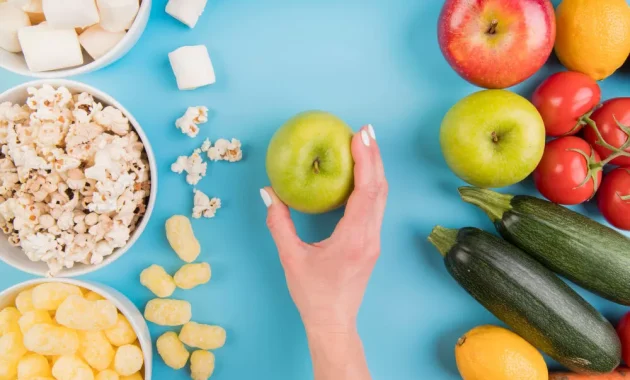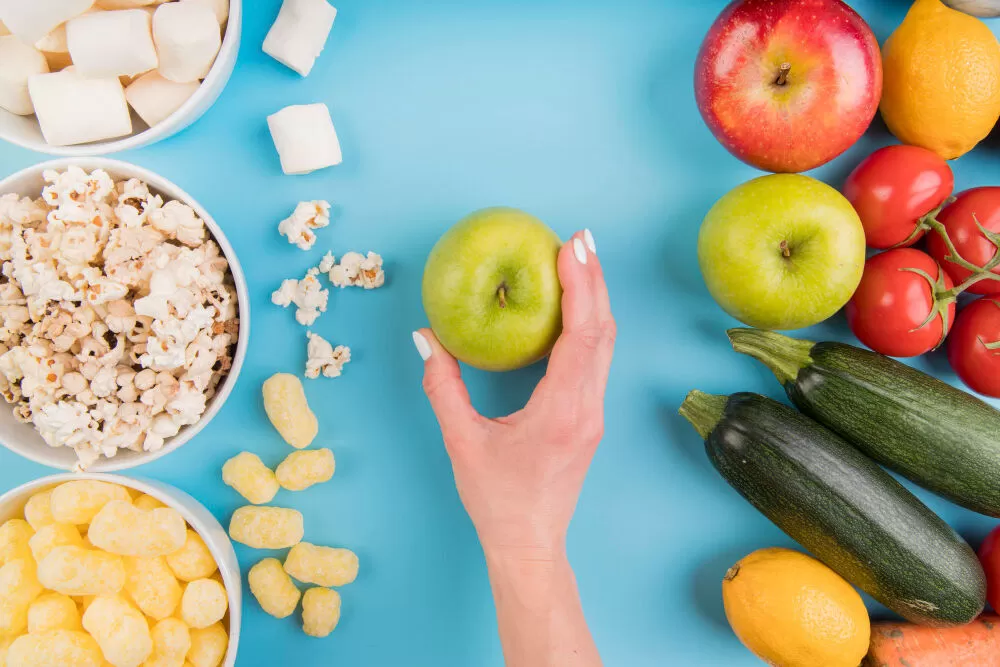
How to Combine Food for Stable Diabetic Energy: A Comprehensive Guide
Managing diabetes requires careful attention to diet. This includes understanding how to combine food for stable diabetic energy. For individuals with diabetes, maintaining stable blood sugar levels is crucial. This directly impacts energy levels and overall health. This article provides a comprehensive guide to achieve this goal.
The information presented here is for informational purposes only. It is not a substitute for professional medical advice. Always consult with your doctor or a registered dietitian before making any significant changes to your diet or treatment plan.
Understanding the Glycemic Index and Glycemic Load
The Glycemic Index (GI) and Glycemic Load (GL) are vital tools for diabetic meal planning. They help in understanding how different foods affect blood sugar. The GI ranks carbohydrates based on how quickly they raise blood glucose levels. Foods with a high GI are digested quickly. This causes a rapid spike in blood sugar. Conversely, low-GI foods are digested slowly. They lead to a gradual rise in blood sugar.
The GL takes into account both the GI and the amount of carbohydrates in a serving. It provides a more realistic picture of a food’s impact on blood sugar. Consider both when planning meals to combine food for stable diabetic energy. Prioritize low-GI and low-GL foods.
The Glycemic Index Explained
The GI is a scale from 0 to 100. Pure glucose is assigned a GI of 100. Foods are then rated relative to glucose. Foods with a GI of 55 or less are considered low. Foods with a GI of 70 or more are considered high. Foods with a GI between 56 and 69 are considered medium.
The Glycemic Load Explained
The GL is calculated by multiplying the GI of a food by the carbohydrate content per serving. Then, divide by 100. A GL of 10 or less is considered low. A GL of 20 or more is considered high. Foods with a GL between 11 and 19 are considered medium.
The Power of Food Combining for Diabetes Management
How to combine food for stable diabetic energy requires strategic planning. Combining foods can significantly impact blood sugar levels. The goal is to slow down the absorption of glucose. This leads to more stable energy levels. Certain food combinations are particularly effective in achieving this.
Combining Carbohydrates with Protein
Protein slows down the digestion of carbohydrates. This leads to a slower release of glucose into the bloodstream. Include a source of protein with every meal and snack. Excellent protein sources include lean meats, fish, eggs, beans, and tofu. For example, combine whole-wheat pasta (carbohydrate) with chicken breast (protein).
Combining Carbohydrates with Healthy Fats
Healthy fats also slow down the digestion of carbohydrates. They contribute to a feeling of fullness. This can help prevent overeating. Good sources of healthy fats include avocados, nuts, seeds, and olive oil. Combine brown rice (carbohydrate) with salmon (healthy fats and protein).
Combining Carbohydrates with Fiber
Fiber slows down the absorption of carbohydrates. It promotes healthy digestion and helps control blood sugar. Fiber-rich foods include fruits, vegetables, and whole grains. Combine a piece of fruit (carbohydrate) with a handful of nuts (fiber and healthy fats).
Practical Meal Planning Strategies
How to combine food for stable diabetic energy involves careful meal planning. Create a balanced plate at each meal. This ensures a good mix of nutrients. This helps maintain stable blood sugar levels.
Building Balanced Plates
Aim to fill half your plate with non-starchy vegetables. These are low in carbohydrates and high in fiber. Fill a quarter of your plate with lean protein. Fill the remaining quarter with complex carbohydrates. Include a small serving of healthy fats. Consider a plate of grilled chicken (protein), broccoli (non-starchy vegetables), quinoa (complex carbohydrate), and a drizzle of olive oil (healthy fat).
Snack Ideas for Stable Energy
Snacks are important for managing blood sugar. Choose snacks that combine protein, healthy fats, and fiber. These combinations provide sustained energy. Examples include: a handful of almonds and an apple, Greek yogurt with berries, or a hard-boiled egg with a few whole-grain crackers.
Sample Meal Plan
Here’s a sample meal plan to illustrate how to combine food for stable diabetic energy. Remember to adjust portion sizes to meet your individual needs. Consult your doctor or dietitian for personalized recommendations.
- Breakfast: Oatmeal (complex carbohydrate) with berries (fiber) and a scoop of protein powder (protein).
- Mid-Morning Snack: A small handful of almonds (healthy fats and protein) and an orange (fiber).
- Lunch: Salad with grilled chicken (protein), mixed greens (non-starchy vegetables), avocado (healthy fats), and a small serving of quinoa (complex carbohydrate).
- Afternoon Snack: Greek yogurt (protein) with a few whole-grain crackers (complex carbohydrate).
- Dinner: Baked salmon (protein and healthy fats), roasted vegetables (non-starchy vegetables), and a small portion of brown rice (complex carbohydrate).
Foods to Prioritize for Stable Blood Sugar
Certain foods are particularly beneficial for how to combine food for stable diabetic energy. These foods have a low GI and GL. They are also rich in fiber, protein, and healthy fats.
Non-Starchy Vegetables
These vegetables are low in carbohydrates and high in fiber. They provide essential vitamins and minerals. Examples include: broccoli, spinach, kale, cauliflower, and bell peppers.
Lean Proteins
Protein helps slow down the digestion of carbohydrates. It helps keep you feeling full. Examples include: chicken, fish, turkey, beans, lentils, and tofu.
Healthy Fats
Healthy fats also slow down carbohydrate digestion. They provide essential nutrients. Examples include: avocados, nuts, seeds, olive oil, and fatty fish like salmon.
Whole Grains
Choose whole grains over refined grains. They contain more fiber. This helps control blood sugar levels. Examples include: oats, quinoa, brown rice, and whole-wheat bread.
Fruits
Choose fruits in moderation. They contain natural sugars. Pair them with protein or healthy fats. This helps to moderate their impact on blood sugar. Examples include: berries, apples, and pears.
Foods to Limit or Avoid
Certain foods can cause rapid spikes in blood sugar. These foods should be limited or avoided. This is a crucial part of how to combine food for stable diabetic energy.
Sugary Drinks
These drinks provide empty calories and quickly raise blood sugar. Examples include: soda, juice, and sweetened beverages.
Processed Foods
These foods are often high in refined carbohydrates, unhealthy fats, and added sugars. Examples include: packaged snacks, fast food, and processed meats.
Refined Grains
These grains are quickly digested. They can cause blood sugar spikes. Examples include: white bread, white rice, and pastries.
Excessive Amounts of Saturated and Trans Fats
These fats can contribute to insulin resistance. They can negatively impact heart health. Examples include: fried foods, processed snacks, and fatty cuts of meat.
Tips for Eating Out with Diabetes
Eating out presents unique challenges for how to combine food for stable diabetic energy. Planning and making smart choices are key.
Plan Ahead
Check the restaurant’s menu online. Look for healthier options. Choose restaurants that offer nutritional information.
Make Smart Choices
Order grilled, baked, or steamed dishes. Request sauces and dressings on the side. Choose whole-grain options. Opt for a side of vegetables instead of fries. Control portion sizes.
Ask Questions
Don’t hesitate to ask the server about ingredients or preparation methods. Request modifications to dishes. This is important for managing your blood sugar.
Monitoring Blood Sugar Levels
Regular blood sugar monitoring is essential for effective diabetes management. This helps you understand how different foods and food combinations affect your body. It also allows you to adjust your diet and medication as needed. This is another critical aspect of how to combine food for stable diabetic energy.
Frequency of Monitoring
Your doctor will advise you on how often to check your blood sugar. This depends on your individual needs and treatment plan. Most people with diabetes need to check their blood sugar multiple times a day. This is especially important before and after meals.
Using a Blood Glucose Meter
Follow the instructions provided with your blood glucose meter. Wash your hands thoroughly. Insert a test strip into the meter. Prick your finger with the lancet. Apply a drop of blood to the test strip. Wait for the meter to display your blood sugar reading.
Interpreting Results
Discuss your blood sugar readings with your doctor. They will help you interpret the results. They will also help you make adjustments to your diet, exercise, and medication. High blood sugar levels may require changes to your treatment plan.
The Role of Exercise
Exercise plays a crucial role in diabetes management. It improves insulin sensitivity. This is important for how to combine food for stable diabetic energy. Regular physical activity helps your body use glucose more effectively. This leads to better blood sugar control.
Types of Exercise
Both aerobic exercise and strength training are beneficial. Aerobic exercise includes activities like walking, running, swimming, and cycling. Strength training includes activities like lifting weights or using resistance bands.
Exercise Guidelines
Aim for at least 150 minutes of moderate-intensity aerobic exercise per week. Include strength training exercises at least two days per week. Consult your doctor before starting any new exercise program.
Timing Exercise
The best time to exercise depends on your individual needs. Some people find it helpful to exercise after meals. This can help to lower blood sugar levels. Check your blood sugar before and after exercise. This helps you to monitor your body’s response.
Conclusion
How to combine food for stable diabetic energy requires knowledge and planning. It is about understanding the impact of different foods on your blood sugar. It involves creating balanced meals and snacks. It includes regular monitoring and physical activity. By following the guidelines provided in this article, you can manage your diabetes effectively. This will improve your overall health and well-being. Remember to consult with your healthcare team. They can provide personalized advice and support. [See also: Diabetes-Friendly Recipes, Exercise and Diabetes, The Impact of Stress on Blood Sugar]

